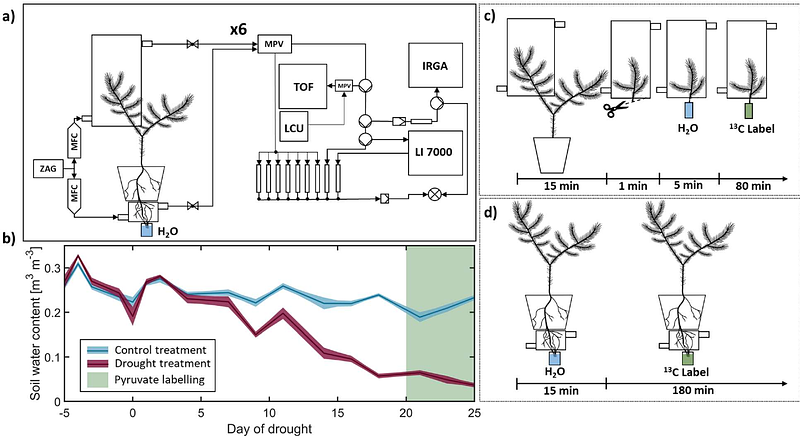Chiral monoterpene dynamics of shoots and roots of Norway spruce in response to drought

Chiral monoterpene dynamics of shoots and roots of Norway spruce in response to drought
Daber, L. E.; Kreuzwieser, J.; Meischner, M.; Williams, J.; Werner, C.
AbstractAlthough chiral monoterpenes emitted by plants above- and belowground shape the chemical landscape of many ecosystems, their biosynthesis and emissions, especially in response to drought, are poorly understood. We imposed a 6-week drought on two-year old, potted saplings of Norway spruce and analysed chiral monoterpene emissions and tissue concentrations from needles and roots. Isotopically labelled pyruvate was used to compare tissue-specific contributions of de novo synthesis to chiral monoterpene concentrations. While de novo synthesis of (-)--pinene and both enantiomers of limonene was apparent in needle emissions, no label was incorporated in roots. Drought reduced chiral monoterpene emissions to 30% of control levels, but increased needle and root tissue concentrations by 150 and 230%, respectively. Aboveground monoterpene concentrations were dominated by (-)-limonene, whereas belowground concentrations mainly consisted of the (-)-enantiomers of -pinene, {beta}-pinene, {beta}-phellandrene and camphene. Chiral composition in needles shifted in response to drought but remained stable in roots. We conclude that chiral monoterpene composition is tissue-specific and likely related to tissue-specific functioning. Instead of being passively emitted from storage pools, our results suggest active control mechanisms regulating chiral monoterpene emissions under drought conditions. Our findings imply important ramifications for understanding the regulation of emissions in relation to storage pools and plant-environmental interactions.